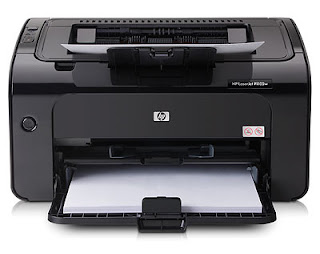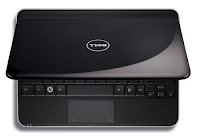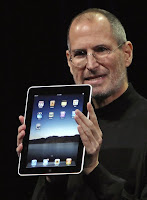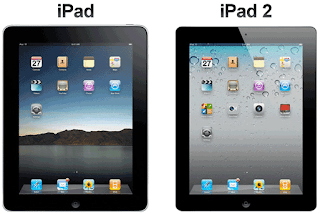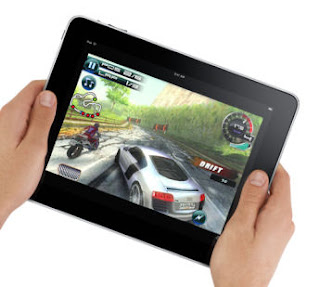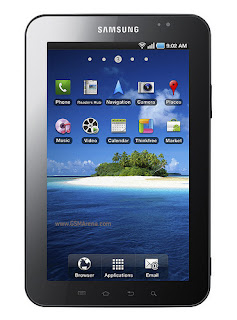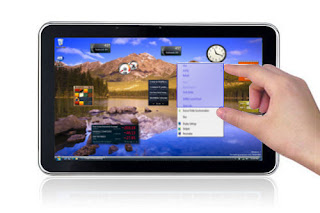Tablet PC Development - Tablet PC is a
laptop - or a book-shaped portable computer. Has a touch screen or digital tablet technology that allows computer users to use a stylus or digital pen than a keyboard or computer mouse.
The term was popularized by Microsoft in 2001, but the tablet PC now refers to any tablet-sized personal computer, even if it does not use the Windows operating system to another PC. Tablet can use the virtual keyboard and handwriting recognition for text input via the touch screen.
The History Of Tablet PC
The following is a list of some important basic history of tablet PCs :
Before 1950
1888 : U.S. Patent granted to Elisha Gray on electrical stylus device for capturing handwriting.
1915 : U.S. Patent on handwriting recognition user interface with a stylus.
1942 : U.S. Patent on the touch screen for handwriting input.
1945 : Vannevar Bush proposes, data archiving device including handwriting input, in an essay As We May Think
1950 : Tom Dimond show Styalator electronic tablet with pen input for computers and software for handwriting recognition in real-time text.
Beginning in the 1960s
RAND Tablet found. RAND Tablet is more known than Styalator, but were created later.
The late 1960s
Alan Kay of Xerox PARC proposed a notebook computer, can use pen input, called the Dynabook: however the device was never built or implemented with pen input.
1966 : In the science fiction television series Star Trek, the crew of the ship carrying, a large electronic clipboard wedge-shaped, operated through the use of the stylus.
1982 : Pencept of Waltham, Massachusetts market a computer terminal for general purpose (general-purpose) using a tablet and handwriting recognition instead of keyboard and mouse. Cadre System markets the terminal point-of-sale Inforite using handwriting recognition and a small electronic tablet and pen.
1985 : CIC Pencept and offer the same PC computers for the consumer market using the tablet and handwriting recognition instead of keyboard and mouse. The operating system is MS-DOS.
1989 : first portable computers commercially available in this type of tablet was the GRiD Systems GRiDPad was released in September. The GridPad manufactured by Samsung, Samsung PenMaster modified from that never made it to commercial distribution.
Operating system based on MS-DOS. Wang Laboratories introduces the Freestyle. Freestyle is an application that will do a screen capture of the MS-DOS application, letting users add annotations and voice and handwriting.
Freestyle is a precursor which is then recorded as advanced applications to systems such as Tablet PC. Operating system is MS-DOS In partnership with Fujitsu, Poqet Computer Corporation announced the arrival of Poqet PC.
In the 1990s,
1991 : Pentop momentum is released. GO Corporation announced a special operating system, called PenPoint OS, showing the control of the desktop operating system via handwritten gesture shapes. NCR released the model 3125 pen computer running MS-DOS, OS or Windows Penpoint Pen. Apple Newton entered development, although ultimately became a PDA, like the original hardware concept of a Tablet PC.
1992 : GO Corporation sends PenPoint OS for general availability and IBM announced IBM 2125 pen computer (IBM model of the first named "ThinkPad") in April. Microsoft released Windows for Pen Computing in response to OS PenPoint by GO Corporation.
1993 : Fujitsu released a tablet PC pen Poqet first to use the integrated wireless LAN. Apple Computer announced the Newton PDA, also known as the Apple MessagePad, which includes handwriting recognition with a stylus.
IBM releases the ThinkPad, the first commercial portable computer tablet from IBM are available for the consumer market. AT & T introduced the EO Personal Communicator combining PenPoint with wireless communications. BellSouth released the IBM Simon Personal Communicator, a mobile phone using the display and analog touchscreen.
This phone does not support handwriting recognition feature, but users can write messages and send them as faxes in a network analog phones, including PDA and Email features.
1999 : "QBE" pen computer created by Aqcess Technologies wins Best Show COMDEX.
Of the 2000s
2000 : first PaceBlade develop devices that meet the standards of Microsoft Tablet PC and received the best hardware in the VAR Vision 2000. Pen computers "QBE Vivo" created by Aqcess Technology get COMDEX Best of Show.
2001 : Bill Gates of Microsoft showed the first public prototype of a Tablet PC (defined by Microsoft as a pen-computer allows hardware in accordance with the specifications made by Microsoft and running a licensed copy of the operating system "Windows XP Tablet PC Edition") at COMDEX.
2003 : PaceBlade received the "Innovation des Jahres 2002/2003" for Tablet PCs from PC Magazine PaceBook Professionell at Cebit Fingerworks developing technology touch touch and movement that was later used on the Apple iPhone.
2006 : Samsung introduced the Samsung Q1 UMPC. Windows Vista was released for general availability. Vista includes Tablet PC functionality special edition of Windows XP. On the Disney Channel Original Movie, Read It and Weep, she uses a Tablet PC for the journal.
2007 : Axiotron Modbook introduced, the computer (and only) the first tablet based Mac hardware and Mac OS X at Macworld.
2008 : In April 2008, as part of a federal court case of the larger, feature gestures and hardware operating systems Windows / Tablet PC is found violating the patent by GO Corp. about a user interface for pen computer operating system. Microsoft technology acquisition is the subject of separate lawsuits. HP released the second Multi-Touch tablet: HP TouchSmart tx2 series.
2009 : Asus announce a tablet netbook, the EEE PC T91 and T91MT, the latter of which is equipped with multi-touch screen. Always Innovating announces new tablet netbook with ARM CPU. Motion Computing J3400 launched.
2010 : MobileDemand xTablet T7000 Rugged Tablet launched a PC running Windows OS and full features include an integrated numeric keyboard, barcode scanner, credit card reader, etc. Apple introduced the iPad, running Apple's IOS. Quaduro system introduces 10 "QuadPad 3G Plus, 900 gram 3G Microsoft Windows-based tablet PC with 8 hours of battery life.
Samsung introduced the Galaxy Tab, running Google Android. bModo launched bModo12 running Windows 7 OS and features include TFT-LCD 11.6 ", 3G, Wi-Fi, GPS, Bluetooth ® 2.1, USB 2.0, SDHC slot, SIM card slot that is not locked, the connector MiniHDMI, OMTP Jack, webcam, mic, etc. Neofonie WeTab release, tablet PC to write MeeGo-based, multi-touch display screen of 11.6 inches at 1366 × 768 pixels.
Dixons Retail plc introduced the Advent Vega, tablet PC 10 "running Android 2.2, has the NVIDIA Tegra chipset 1 GHz, 512 Mb RAM and ROM, 1.3 MP camera, WiFi connectivity b / g, Bluetooth 2.1, micro SD card slot, USB port and a battery life of up to 16 hours for audio playback and 6.5 hours of 1080p video. Dell Inspiron Netbook announced flip Duo Hybrid Screen and Tablet PC HP released the Slate 500, which runs a full version of Windows 7.
2011 : Motorola announces Xoom Tablets, 10-inch tablet that is supported by the version of the upcoming Android 3.0, which is Honeycomb Asus EEE announced memo pad (tablet 7 inches), EEE Slate EP121 (tablet Windows 7), EEE Pad Transformer (10 inch tablet with Android) and EEE Pad Slider (10 inch tablet with sliding screen top, QWERTY keyboard) [all tablets using IPS display] showing the tablet Dell Streak 7 and said it worked on 10 Streak 10-inch Apple announced two iPad.
Some Tablet Pc
Screen size trends
As with other portable computers, the larger size makes it easy to bring usability, but the portability of the lower and higher power requirements.
For the current tablet computers, (not a tablet PC) common size is 10 "(used by the iPad) or 7" (used by many Android tablet). Many tablet PC makers have standardized on a wide screen format 12 ", with a resolution of 1280x800 pixels. Fujitsu T5010 has a larger display, 13.3", but still running at a resolution of 1280x800 pixels.
Operating System
Microsoft windows
After developing the Windows for Pen Computing, Microsoft extends support for the tablet that can run Windows as Microsoft's Tablet PC. According to Microsoft's definition of 2001, "Microsoft Tablet PC" is a pen-based and x86 PC that has the function of handwriting and speech recognition.
Tablet PCs use the same hardware as regular laptops, but adds support for pen input. For special support for pen input, Microsoft released Windows XP Tablet PC Edition. Currently there is no special version of Windows Tablet, but the support is built for both Home and Business versions of Windows Vista and Windows 7.
Tablet running Windows to get the additional functionality using the touch screen for mouse input, handwriting recognition, and gesture support. Once the Tablet PC, UMPC Microsoft announced the initiative in 2006 to bring Windows to the tablet form factor with a smaller and centered on the touch.
It was relaunched in 2010 as a Slate PC, to promote a tablet running Windows 7, ahead of the launch of the Apple iPad. Slate PCs are expected to benefit from the advancement of mobile devices from the success of netbooks.
While many manufacturers are moving to the ARM architecture tablet with a lightweight operating system, Microsoft still on Windows. Although Microsoft has a Windows CE for ARM support he has kept the target market for the smartphone industry with the new Windows Mobile and Windows-based Windows CE 6, Windows Phone 7.
Some manufacturers, however, still showed a prototype tablet running Windows CE-based common framework.
With a succession of Windows Vista, Tablet PC functionality no longer requires a separate issue. Tablet PC support is built into all editions of Windows Vista with the exception of Home Basic and Starter editions.
This extends the handwriting recognition, ink collection, and additional input methods for each computer running Vista even if the input device is an external digitizer, touch screen, or even a regular mouse.
Vista also supports multi-touch and gestures (originally developed for Microsoft Surface version for Vista) and now used by the public with the release of multi-touch tablet.
Windows Vista also significantly improves handwriting recognition function with the introduction of the handwriting recognition personalization tool should automatically handwriting learning tools.
Tablet functionality is available in all editions except Windows 7 Starter edition. It introduces a new Math Input Panel recognizes mathematical expressions and formulas handwriting, as well as integrated with other programs.
Windows 7 also significantly improve pen input and handwriting recognition with a faster, more accurate, and supports more languages, including East Asian writing systems.
Personalized custom dictionaries to help with specific vocabulary (such as medical and technical terms), and predictive text input speed up the process to make the activity more quickly noted.
Multi-touch technology is also available on some tablet PCs, enabling more advanced interaction using signs with the touch of your fingers like using a mouse. Problems may arise with tablet functionality of the OS.
Windows 7 to have touch capabilities built with Microsoft's Surface technology. This is a movement and a touch-centric UI enhancement that works with most computers touch today.
Among the tablet PC was first launched in 2010 based on operating system Windows 7 is bModo12 of Galaxy.Windows bModo and Samsung has a history of tablet technology, including Windows XP Tablet PC Edition.
Tablet PC Edition is a superset of Windows XP Professional, these differences tablet functionality, including alternate text input (Tablet PC Input Panel) and basic drivers for support of tablet PC specific hardware.
Requirements to install Tablet PC Edition include a tablet digitizer or touchscreen device, and hardware control buttons including shortcut keys Ctrl-Alt-Delete, scroll buttons, and at least one user-configurable application button.
Linux
One of the early implementations of Linux tablet was the ProGear FrontPath. ProGear uses Transmeta chip and a resistive digitizer. ProGear initially came with a version of Slackware Linux, but then can be bought with Windows 98.
Because the goal is the computer IBM PC compatible, Windows 98 can run many different operating systems. However, these devices are no longer for sale FrontPath has ceased operations.
Important to note that the touch screen a lot of sub-notebook computer can run multiple Linux distributions with little customization. X.org now supports screen rotation and tablet input through Wacom drivers, and handwriting recognition software better than Qt-based Qtopia and GTK +-based Internet Tablet OS provide a promising system of free and open source for future development.
Open source software on Linux records include applications such as Xournal (PDF file that supports the explanation), Gournal (Gnome-based note taking application), and Java-based Jarnal (which supports handwriting recognition as a function of default).
Before the arrival of such software, many users have to rely on on-screen keyboards and alternative text input methods like Dasher. There is a handwriting recognition program that is available stand-alone, CellWriter, which requires users to write letters separately in the box.
A number of projects dedicated to the Linux OS-based tablet PC. Because of all this is open source, they are freely available and can be run or ported to the device in accordance with the design of the tablet PC.
Maemo (MeeGo in the year changed to 2010), a Debian Linux graphical user environment, developed for the Nokia Internet Tablet (770, N800, N810 & N900). This is the fifth generation (5G), and has a wide array of applications available in both official repository and user support.
Ubuntu Netbook Remix edition, as well as Intel-sponsored Moblin project, both have support for touch screen user interface integrated into them. Canonical has suggested a better tablet support with an integrated UI for Ubuntu 10.10.
TabletKiosk currently offers a hybrid digitizer / touch device running openSUSE Linux. This is the first device with this feature to support Linux.



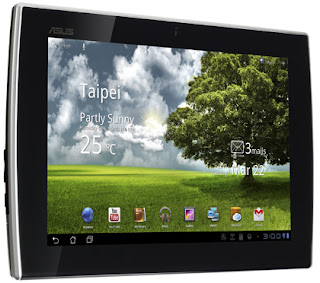
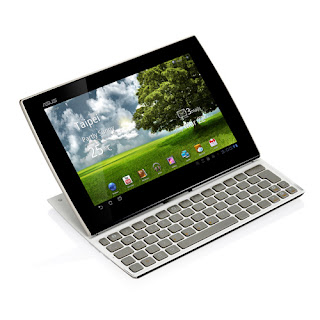

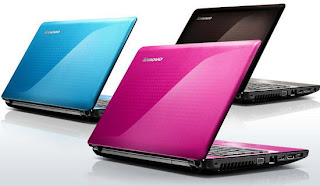







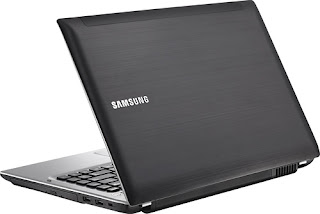

.jpg)


